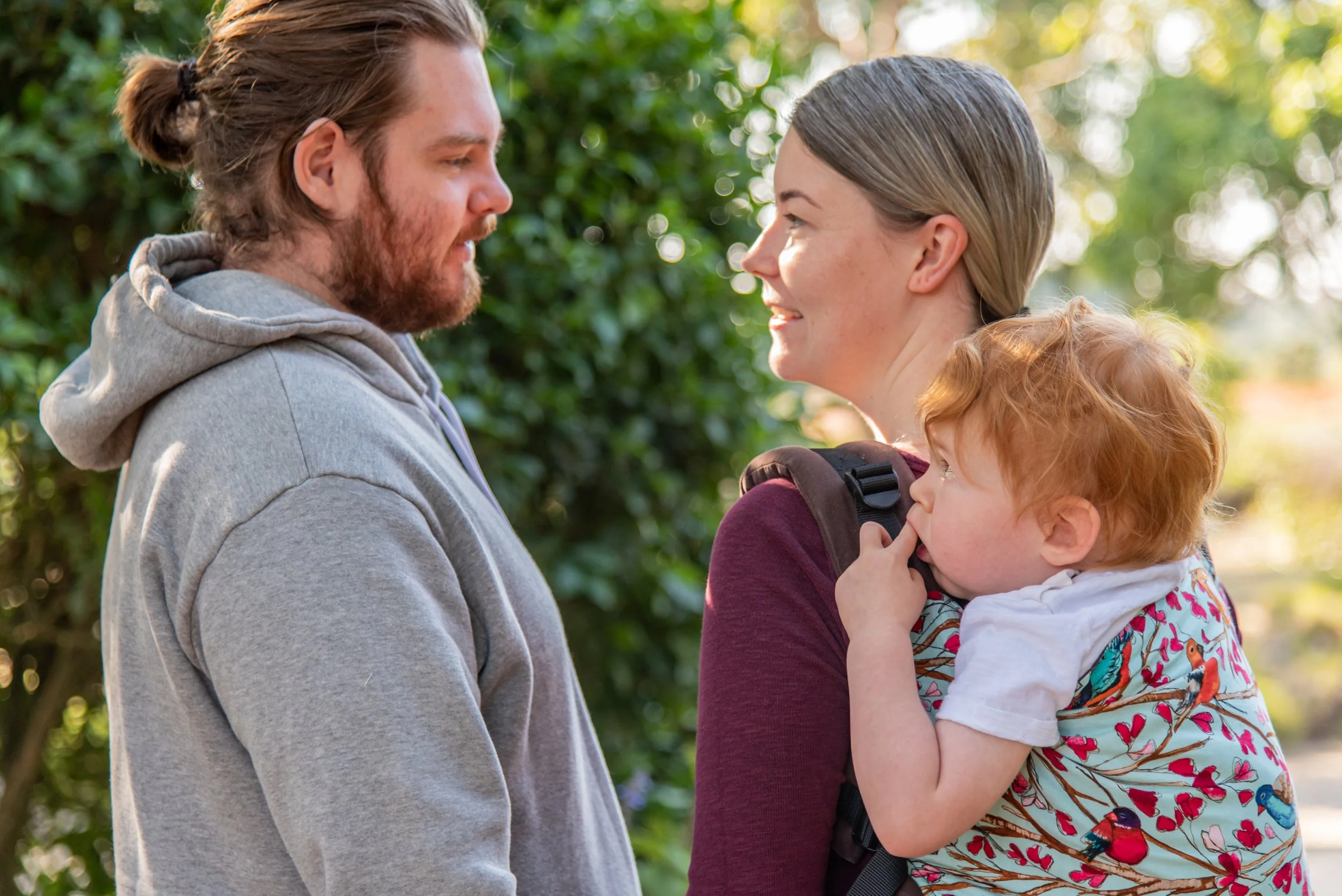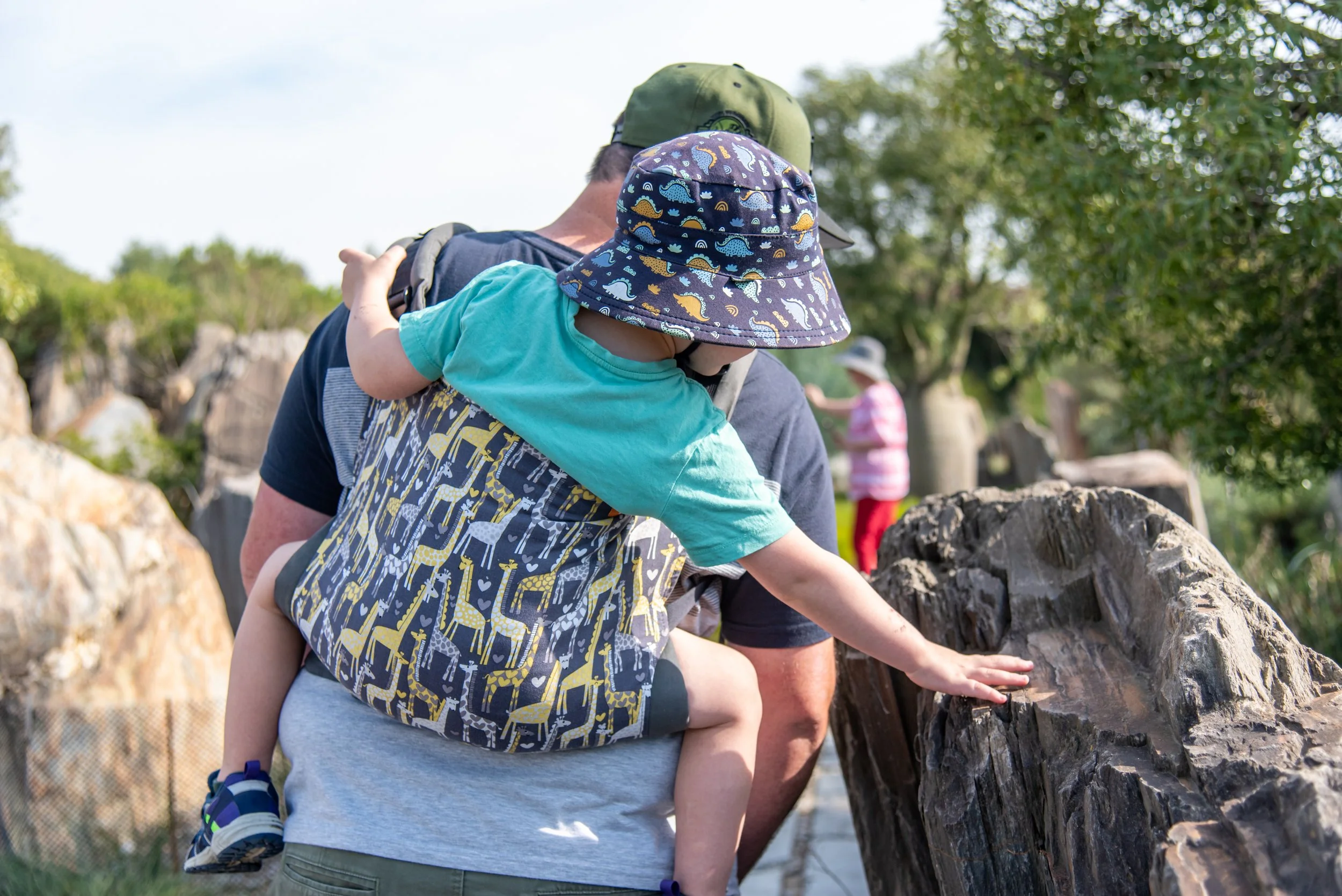Back Carrying: Babywearing Beyond the Front
Moving on to back carrying can be pretty daunting. How on earth do you get them up there without dropping them?
The good news is: it’s more achievable than it looks. Once your baby is developmentally ready — generally around 6 to 9 months — and you’ve become confident using your soft structured carrier (SSC) on the front, you’re likely ready to explore back carrying.
It’s a great next step in your babywearing journey and opens up a world of comfort, freedom, and connection — especially as your child gets heavier and more curious about the world.
Why Back Carry?
Back carrying isn’t just a skill — it’s a lifesaver for busy parents and a powerful tool for connecting with toddlers and older children in a way that’s both practical and respectful.
Here’s why so many families choose to babywear on the back:
Keeps your hands free for cooking, shopping, or daily tasks
Offers curious children a great view of their surroundings
Reduces strain on your arms and shoulders
Makes public outings easier (no pram through the market crowds!)
Calms overstimulated toddlers who need a secure place to rest
It’s also a helpful solution for keeping toddlers close in busy or unsafe environments, like school pickup zones, train stations, or car parks.
Developmental Readiness: When Can I Back Carry?
Most babies are ready to be worn on the back when they:
Can sit unassisted
Have strong head, neck, and trunk control
Are around 6 months of age or older
Some children — especially those born prematurely or with lower tone — may need a little longer. Always listen to your child’s cues and consult with a babywearing educator or consultant if unsure.
How to Get Them Up Safely
Yes, it feels like a magic trick at first — but there are multiple techniques for getting your baby on your back without needing a second pair of hands:
Hip scoot method: Start with baby on your hip and scoot them around behind you.
Santa toss: For toddlers who love movement and are confident sitters, this can work well.
Seat-first method: Especially useful with woven wraps, start the seat on a surface or lap before wrapping over.
You can learn these in a workshop or with face-to-face support at our babywearing meets and markets. We’ll walk you through each step and give you time to practice using demo dolls before trying with your own child.
Carrier Options for Back Wearing
While wraps, meh dais, and onbuhimos are all great options, soft structured carriers (SSCs) remain the most common choice for back carrying, especially with toddlers.
Look for features such as:
A wide, supportive waistband
Padded, adjustable shoulder straps
A chest (or sternum) strap for stability
A high panel for taller toddlers or sleepy support
Back carrying can also be done with a woven wrap (in carries like the rucksack or double hammock) or a meh dai with long straps for adjustability.
Babywearing Hack for Hair-Pullers
Toddlers love to grab what’s in reach — and if you’re back wearing, that usually means your hair, earrings, or hood. Try this:
Take a silicone teething necklace (with a breakaway clasp) and turn it around to the back for your child to play with or chew.
Thread your chest strap through the necklace cord to stop it being pulled tightly around your throat.
Always supervise play and remove the necklace if your child falls asleep.
You can also check out clip-on mirrors for babywearing or use your phone’s camera in selfie mode to check in over your shoulder.
Babywearing in Public: Dealing with Judgement
Let’s talk about the elephant in the supermarket: the older child in a carrier.
Yes, people may stare. Yes, someone might say, “Aren’t you big enough to walk, young man?” But here’s the truth: that says far more about them than it does about you or your child.
These reactions are often echoes of outdated attitudes — passed down from a time when baby carriers weren’t commonly used and holding a child meant tired arms and social inconvenience. So children were told to "toughen up" or "walk like a big kid" even when their bodies weren't ready.
By babywearing your older child, you’re meeting their needs for closeness, reassurance, and connection. You’re listening to their cues, not someone else’s generational discomfort. You’re breaking cycles.
Keeping Toddlers Close (and Safe)
Impulse control doesn’t really begin until 3–4 years of age, and even then, it’s a work in progress. Expecting toddlers to “stay with you” in a busy car park or festival isn’t always realistic — or safe.
Back carrying offers:
Physical safety in unpredictable environments
Emotional connection for overstimulated children
Hands-free comfort for parents managing multiple kids
While prams can restrain a child, they can also disconnect them from your voice and reassurance. Back carrying, especially with older babies or toddlers, is often the sweet spot between security and connection.
Final Thoughts
Back carrying isn’t just a practical step — it’s a deepening of your connection. It’s not about independence from closeness, but a new way of sharing it.
Whether you’re prepping dinner with a toddler peeking over your shoulder or walking confidently through a busy market without a pram in sight, babywearing beyond the front empowers both you and your child.
Come join us at a meet-up, try on a few styles, and feel the difference. You don’t need to go it alone — we’re here to walk behind you (and beside you) every step of the way.


















